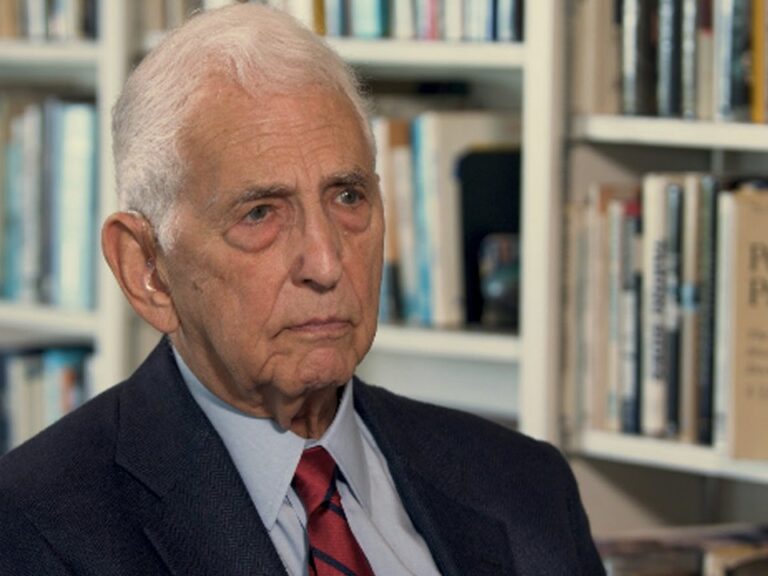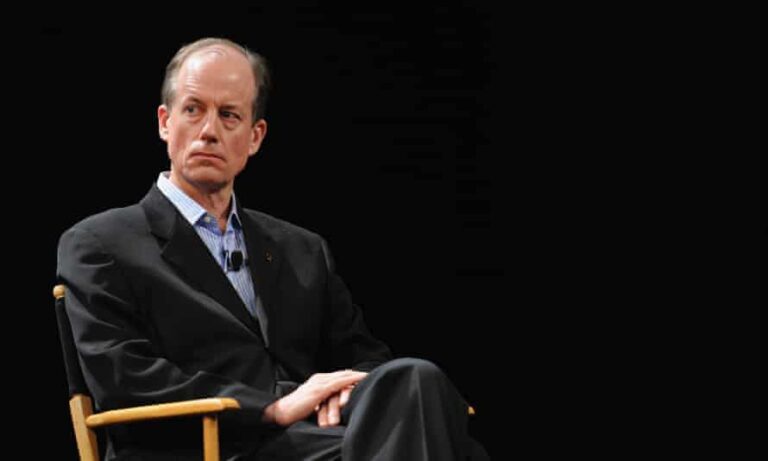On Reality Asserts Itself, Mr. Drake tells Host Paul Jay that mass surveillance is not about protecting people, in the end it’s about social control. This is an episode of Reality Asserts Itself, produced August 5, 2015, with Paul Jay.
STORY TRANSCRIPT
PAUL JAY, SENIOR EDITOR, TRNN: Welcome back to Reality Asserts Itself on The Real News Network. I’m Paul Jay. And we’re continuing our series of interviews with Thomas Drake, a former senior executive at the National Security Agency who blew the whistle on the NSA’s inability or unwillingness or deliberateness to not deal with intelligence or act on intelligence they had that might have prevented 9/11. He blew the whistle on a billion-dollar boondoggle of creating a intelligence surveillance apparatus that on the whole seems to be completely worthless, and blew the whistle on the whole mass surveillance program itself. Thanks for joining us again.
THOMAS DRAKE, WHISTLEBLOWER AND FMR. NSA SENIOR EXEC.: Thanks for having me. So where we left off, we were talking about the instruction to–the NSA gives to its people–and I guess one assumes this begins with Cheney–get it all, meaning the Constitution’s not really an issue right now because we’ve been attacked. Let’s get every piece of data on everyone we possibly can. Is that kind of describe it?
DRAKE: No, and the program’s name at NSA was called Stellar Wind. It was actually a secret. It’s now been made available. You’ll you go on to the website, you’ll–websites have it now. But President Bush, October 4, 2001, actually signed a secret presidential finding order authorizing what was called the President’s Surveillance Program. It was known as “the Program” by those who knew about it or read into it.
JAY: Now, I’ve always thought, rightly or wrongly, or speculated that a lot of this went on pre-9/11 anyway. Out of the Cold War, they already had their justification [incompr.] national security state. They were spying on people in all kinds of ways. Did 9/11 just give them the means to justify an enormous new expenditure to kind of do what they were doing, but just on a much bigger scale?
DRAKE: Much faster scale, basically carte blanche, licensing unto themselves in secret the means to just expand this far beyond any constraints that had existed. It didn’t matter what the law said. It didn’t matter what the statutes said. We’re going to just treat the United States as if it were a foreign nation for dragnet surveillance. And they started with phone numbers. They started with the big telcos. They had secret agreements that already were in place, particularly with AT&T. A lot of those were expanded greatly, as we know from the Snowden disclosures. We know at least Verizon, for many, many years–and continues to do so to this day–was turning over all phone numbers via the FBI to NSA every day. So it started with phone numbers, and then it went to emails, email addresses, internet service providers, internet usage, internet data, data mining, as well as financial records.
JAY: Now, the claim all along was we’re only looking at metadata.
DRAKE: Yeah, that’s actually–that’s a government meme, because they’re desperate to protect the fact that wherever possible, ’cause of the advances in technology, they want the content as well. Metadata in some ways is a misnomer. It’s really meta-content. You can get to know an awful lot about a person by virtue of just the metadata, as I call it, meta-content.
JAY: Break that down. What does that mean for people that don’t know?
DRAKE: Metadata is really–it’s–if it’s, like, a phone number, it’s just the phone number itself, the duration of the call, your phone number, the numbers that you’re calling, location information, basically subscriber information, your account information, similar to what you get in a billing statement. That would be the metadata.
JAY: But they were doing more than that.
DRAKE: Increasingly, as time went on, the advances in technology have allowed vast amounts of the content to be kept as well.
JAY: ‘Cause otherwise what’s the point? What do you get out of having just metadata?
DRAKE: That’s part of the mindset. Do you want to collect it all? You don’t want to just stop the collecting of metadata, because the technology allows you to collect the content along with it as well. In fact, the metadata really is the context for the content.
JAY: Now, in various TV shows and movies we’ve seen NSA guys with their headphones on just willy-nilly listening to all kinds of conversations.
DRAKE: I used to do that for years overseas, listening in on communications of other countries.
JAY: So that’s what’s started happening here.
DRAKE: Right. But you don’t have enough people, you don’t have enough pairs of years, so you increasingly go to technology.
JAY: But this is without warrants; the listening that is going on is happening without warrant.
DRAKE: Well, there are cases where they still do the warrant process, you know, they do more the traditional warrant process. But we’re talking about the wholesale violation of thousands upon thousands, tens of thousands of people living in the United States.
JAY: And in this get-at-everything, are they recording actual calls in data banks?
DRAKE: Wherever possible, where the technology afforded. See, digital, ironically enough, the digital revolution, the digital age–we’ve had an information age for quite some time. Go back to Marconi or go back to the telegraph, right? That’s radio, Marconi. Go all the way back to the 1840s when the telegraph was invented, you know, see the people that [incompr.] Morse code–you know, as we called them in the military, the ditty boppers, right, just dots and dashes, right? We’ve had information, the information age for quite some time, right, sort of along with the Industrial Revolution. We’re talking about the digital age. It makes it much easier to store it, much easier to keep it, ’cause it’s not analog; it’s digital. It’s all ones and zeros. It can be stored–.
JAY: But I’ve always imagined that in theory they record, like, this massive amounts of actually recording people’s conversations,–
DRAKE: Increasingly.
JAY: –and then they can do keyword search, and if they want to pull up a particular person’s call, they can. Is that what they’ve done?
DRAKE: They can. They can, yes, increasingly so, or do machine conversion, where they actually are converting it into text and then doing very rapid scans in terms of keyword searching.
JAY: So this is quite contrary what we’ve been told, if I understand it correctly, ’cause as far as I understand it, they keep saying it’s just metadata. If we want to go past that, we get a warrant.
DRAKE: Yeah. Well, without getting into the weeds of the legality, they’ve argued what’s called third-party doctrine. It’s based on Smith v. Maryland from the late ’70s, this argument that you have no reasonable expectation of privacy when it comes to metadata. That’s basically their argument, which they–it was a secret interpretation of the original Patriot Act, which was signed into law in October 2001. Essentially meant I could just show up at any business, right, and I could get the business records, and the fact that you have an account with them, the fact that you’re a subscriber doesn’t matter. You have no reasonable expectation of privacy. For national security purposes, we can ask for it. And increasingly they’re using that mechanism to gather as much of that subscriber data as possible,–
JAY: But they go–.
DRAKE: Under the guise of national security. They go much further than that. And they’ve been going much further than that for many, many years.
JAY: Which means recording actual calls without warrants.
DRAKE: Yeah, or getting entire billing statements, and not just the metadata but now being able to take the actual calls themselves,–
JAY: Who you called–.
DRAKE: –the full–the content of text messages, the content of emails.
JAY: And what do they do with this massive amount of data?
DRAKE: Store it and search through it, or just keep it in case they need it later or for parallel construction. This is one of the other things that is now being used routinely, where under the guise of national security or the guise of intelligence, you’re actually collecting it and then your repurposing it. So you’re actually using it for law enforcement. You’re using it to go after people. You’re using it to create crimes.
JAY: Where the FBI can charge someone based on the NSA information, but then they–.
DRAKE: But it’s already tainted. [incompr.] you’ve tainted it, but it doesn’t matter, because now you’re hiding it behind national security.
JAY: Yeah, and the FBI creates its own scenario how they supposedly got to this information without the NSA.
DRAKE: Yes, when in fact what they’re hiding, what they’re obscuring is where it actually came from or what the trigger information was.
JAY: Now, we know–.
DRAKE: They’re completely bypassing due process, which protects persons under the Constitution.
JAY: Now, when you’re hired in 2001 and you start working at the NSA, one of your jobs, if I understand it correctly, was you had to actually decide what would be the software that was going to do all this. And there were two different paths to go down. Is that right?
DRAKE: Well, one path is mass surveillance or collect-it-all, just take it all in the digital age. The other path is you get much smarter about it. You only take what you need. You only target. I was taught to target. This goes back to the Cold War. Even the Cold War, with the advancing technology, we didn’t take it all. We used to joke about we were, like, one of the vacuum cleaners of the sky. But even though we were a vacuum cleaner, we only sucked a little bit of it.
JAY: Take-it-all was called Trailblazer.
DRAKE: The take it–well, take-it-all actually was the mass surveillance regime. Trailblazer was supposed to be NSA’s answer to the 21st century, because they realized they were coming up increasingly short in making sense of large volumes of data. So they needed something that was completely different, right? But they used their mindset, right, from the old analog days, the traditional ways, and just said, well, let’s just build something that’ll take it all. The Trailblazer itself was an utter failure. They never did deliver. They just spent a whole lot of money.
JAY: Well, I was about to say that a lot of that is not actually driven by the amount of money you can spend, the amount of contracts you’re giving out. And back to something that was said in the earlier segment, how banal so much of this is is ’cause it’s about making dough.
DRAKE: But a critical–and what enabled that was a critical strategic decision that General Michael Hayden at the time made as the director of NSA. He’s said, we’re going to buy the solution; we’re not going to make it. Buying it meant we’re going to go to the military-industrial-intelligence complex and we’re going to spend lots and lots of money for them to provide us a solution. If you’re the military-industrial complex, you’re not going to provide a solution that you’re going to deliver within just a few months or a couple of years; you’re going to milk it for all it’s worth, because that’s the nature of the military-industrial complex.
JAY: How much did it wind up costing?
DRAKE: Well, the original program was almost $4 billion. They spent several billions above that by the time all was said and done over a six-year period.
JAY: And it didn’t work?
DRAKE: It didn’t work. They never actually delivered anything. All they did was spend a whole lot of money and create a whole bunch of PowerPoint slides. It became the seed money–in the year after the last year of the Trailblazer program, when General Keith Alexander in 2005, August 2005, becomes the new director of NSA, they use the remaining monies of Trailblazer to start up his answer to Trailblazer, which was the collect-it-all approach, literally, called Turbulence.
JAY: And so what are they using now?
DRAKE: It’s the follow-on to Turbulence.
JAY: Turbulence.
DRAKE: And a whole bunch of other programs.
JAY: Any idea what that would have cost?
DRAKE: Billions and billions. I don’t even know what the full cost is. It was already several billion when I left in terms of Turbulence. This big data requires big programs and big money [crosstalk]
JAY: And is there any evidence turbulence has made the country any safer?
DRAKE: No, other than collecting a whole lot of data. I mean, they’ve got this massive facility they’re building out in Utah, the Utah data facility. They’re also building an even larger facility at the main campus at Fort Meade, Maryland, on what used to be the golf course that I used to run around.
JAY: I know William Binney, who was involved in developing it, who was at the NSA, who retired just around the time you started working there, right, had developed something called ThinThread.
DRAKE: ThinThread was an extraordinary program. It was actually to answer the key challenge problem. They called it–they had challenge problems. One of the key challenge problems is how do you make sense of data, right, when there’s vast amounts of it. So what they called–it was volume, variety, and velocity. So you have tons and tons of it, all kinds of it, and it’s coming at you faster and faster each and every day. This is the explosion of the digital age–fiber optics, massive bandwidths, super high-speed. How do you make sense of it? Far more than we’d ever had in the analog. In some cases it makes the era that I grew up in, although I saw that transition in the early ’80s from the analog to the digital age, in terms of regular tape recorders and headsets, to actual computer-based–so I lived that transition in the early ’80s when I was overseas flying in RC-135s and doing electronic warfare. So in the ’90s, they realized post-Cold War, with internet exploding–and, of course, internet had been developed, ironically enough, to deal with a nuclear winter: in case you blew out all your communication nodes, you could still get the message through. So here’s the ’90s. What do we do about all this data? And a very small–it was called the SIARC. It was the SIGINT, signals intelligence analysis research center. So–automation, the SIGINT Automation Research Center, otherwise known as a SIARC. SIARC was like a Skunk Works operation. And Bill Binney was the crypto mathematician as well. And I got to know them–I actually got to know them before 9/11. I got to know them after 9/11 when I was there as a senior executive, because they actually had the answer. They had developed this over several years. It was ready for operational deployment well before 9/11. It was never given the green light. It was actually formally canceled in August 2001. I attempted to resurrect it shortly after 9/11–it was, again, a burden that I carry: it had a two-page classified implementation plan, and it was all rejected.
JAY: And just–if I understand it correctly, what it did is you would have someone you had some reason to believe was involved in no good, and then you could build patterns of interconnections, so you’re actually targeting something based on some actual evidence rather than just get-it-all. And then Binney’s argument now is get-it-all means that you actually just made a haystack bigger within which you’re trying to find a needle.
DRAKE: Yeah, a completely different approach. One is you build bigger haystacks. The other one is you actually look for needles.
JAY: So how much do you think this is just driven by getting to spend billions and billions of dollars?
DRAKE: It is. I can make a very powerful argument that that was one of the primary drivers, massive national security jobs program, that we’re going to–. And I know senior executives and program managers who spoke to this quite openly. You know, we’re going to make us superrich from 9/11 and from all these programs. Even before 9/11, it was already going in that direction with very large programs. So you can imagine Hayden making a strategic decision to go to the military-industrial-intelligence complex and simply buy the solution. That meant you’re going to have to spend lots and lots of money. These companies are not going to belly up to the billions of dollars that are available. We used to joke about the Trailblazer bar for nothing.
JAY: And from a strategic point of view, is it in their consciousness? How concerned are they about domestic dissent? How are they concerned about if there’s ever 20, 25, 30 percent unemployment, if you actually get into a place where you start to have a real mass movement in this country, is this in their mind, that this might help us in those days?
DRAKE: [incompr.] national security state. You know, we’ve got priority, and it’s an existential threat, so we’ll spend many, many billions to deal with the threat.
JAY: But you don’t think it’s also, at some point, they think, could be used domestically to control–.
DRAKE: If you’re talking mass surveillance.
JAY: That’s what I’m talking.
DRAKE: Again, this is another one of those elephants in the room. Mass surveillance is not about protecting people. It’s about social control in the end.
JAY: That’s what I’m asking.
DRAKE: You don’t bring all this information, you don’t store it all–this is like The Minority Report, right? You have this vast amount of data, you’re going to use it against people. And part of what you’re going to target–and this is from within–is any potential threats that exist, similar, just on a large much larger scale and a much more automated scale, that happened during the Nixon administration. Nixon had enemies, and he used the FBI and other instruments of national power, including NSA. NSA had a program called operation MINARET. It was literally to take the power of NSA back in the ’60s and the early ’70s to target those who were designated as threats to the state, in total violation of the Constitution.
JAY: I’ve been suggesting that what happened in Baltimore after the death or murder of Freddie Gray and all the resistance that rose up here, that this seemed to also be let’s take–never not take advantage of a good crisis. The National Guard comes in. They get to learn how to occupy a fairly big American city. They have a curfew. They get to learn how to implement a curfew in a fairly big American city. I mean, it seems such overkill that you’ve got to wonder why spend so many millions of dollars on this unless it’s kind of a dress rehearsal. And then I wonder, we know there’s such a thing as fusion centers, which is where the various intelligence agencies–I think even military intelligence is involved, local police force, FBI. Like, everybody’s supposed to be collaborating there. I mean, to what extent do you think this listening ability, I mean, get-it-all ability, can be driven out of a fusion center, could be focused on like a Baltimore?
DRAKE: That’s an end state. It’s a day-to-day end state. You never can get enough data. You’re addicted to the data. It’s like you’re a drug addict and you’re mainlining every day and there’s always more data to feed you. And there’s many, many veins you can stick the needles in.
JAY: But do you think when you have something like the Baltimore resistance–some people call it uprising–going on, I mean, are these fusion centers listening to everybody’s phone calls?
DRAKE: Increasingly, yes. That’s how you maintain social control. That’s how you keep track of people. You don’t want uncertainty. You don’t want–you want control. I keep coming back to that. The whole point is control. You can’t have people just acting on their own, because you might not be able to control it. Now you’re back to authority, you’re back to structures of power to keep people in their place. It doesn’t matter whether or not authority abuse their power, as we know happened. But there’s long-standing issues in terms of the social structures that created it.
JAY: And here the social structure–.
DRAKE: And this is so egregious, that someone’s actually murdered in a van, right. Murdered. Murdered.
JAY: And the social structure that has to be defended is the one that has chronic poverty at its heart.
DRAKE: Yes. Tragically so. Why do you want to really fix that? Why would you want to actually empower people? Why would you want to let them have that opportunity to self-actualize? You’ve got to keep that in place. So it makes it very difficult to get out of that. So, yeah, you look the wrong way, you’re on the wrong side of the street, hey, we’re going to just pick you up. People actually were–here I am, a white man. My private attorney, when they actually indicted me, I didn’t know they’d indicted me. I’m at lunch down in Bethesda, just minding my own business, although I was waiting for this. I had already been secretly charged. It was just a matter of time in which they would actually drop that sword of Damocles on me and actually indict me. And I knew it was going to be quite public, just by virtue of what was about to happen. I didn’t know exactly when. We knew it was imminent. And he calls me and he’s on the phone [incompr.] where are you? I said, what do you mean, where am I? He says, yeah, where are you? He actually thought I had been taken right out of the store. I’d just been–and incarcerated, that he was going to have to come and actually either post bail, if that was possible, or actually visit me in jail.
JAY: Okay. We’re going to continue. Please join us for the next segment of our interview with Thomas Drake on Reality Asserts Itself on The Real News Network.






